
Speaking of the outer margins of Henry David Thoreau inspiration, in November 1954, LIFE Magazine published a massive feature on an ersatz uranium hunter named George Vick. At the age of 48, and after nine grueling months searching the Four Corners region of Colorado and Utah, Vick found a massive uranium deposit, which he sold to a mining company for $10 million. The LIFE cover line, “The Man Who Found $10 Million,” made him an instant target for people asking for a piece of that easy money. Vick moved to California and set up his own think tank for the nuclear future, which he called Walden West. Later, when the future looked bleak, he built an apocalypse-proof bunker mansion in British Columbia, which he called, of course, Walden North.

Which all turns out to be the tangent here, because Robert Rauschenberg cut out the aerial photo of Vick’s treasure trail and, in 1958, working in the gap between LIFE and art, he collaged it to the center of a small combine titled, Lincoln. Lincoln is one of at least seven small combines Rauschenberg made in 1958, along with a similar number in 1957. [I wrote about another of these little personal combines, State, in 2020.]
Most of these were given to friends, but Leo Castelli sold Lincoln to Grace & Edwin Hokin, a steel & rubber manufacturer from Chicago, in 1958. Then it was the smallest of the three Rauschenbergs included in a 1959-60 traveling exhibition, “School of New York: Some Younger Artists,” that started at the Stable Gallery. [The others were Monogram, the goat combine; and Trophy I (for Merce Cunningham).]
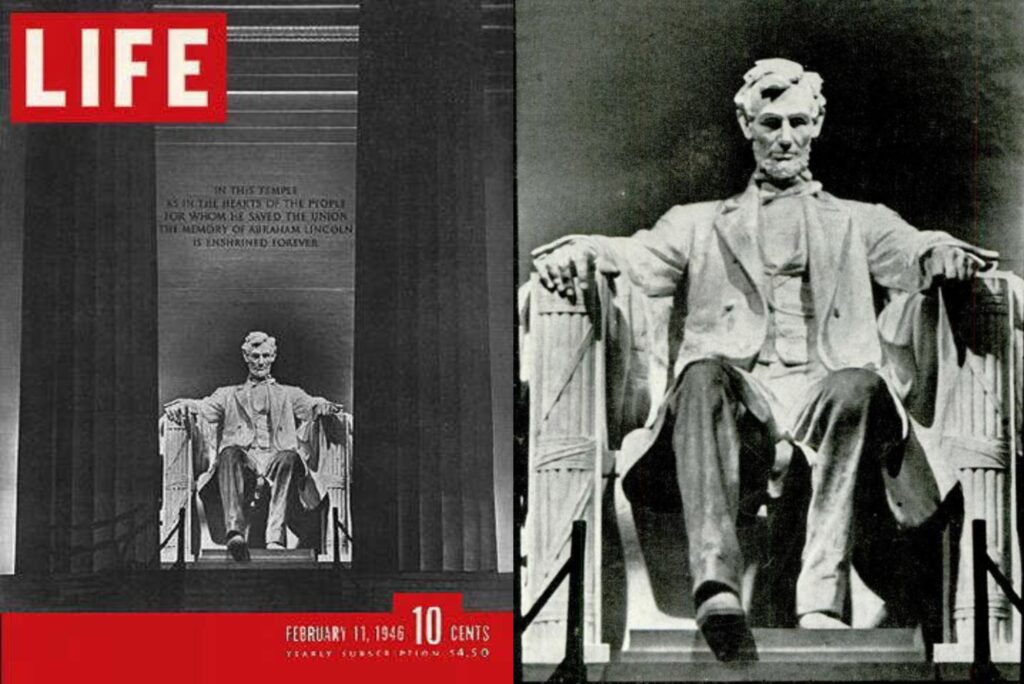
The photo of Lincoln—or of the Lincoln Memorial—is also from LIFE, somehow. It was taken by George Skadding and ran on the cover of the Feb. 11, 1946 issue, but that image doesn’t match the cropped dimensions of Rauschenberg’s version. Also, there’s a border on the photo, not just white paint, and the threads of the canvas are visible in the image, so wherever it’s from, it presumably went on wet.
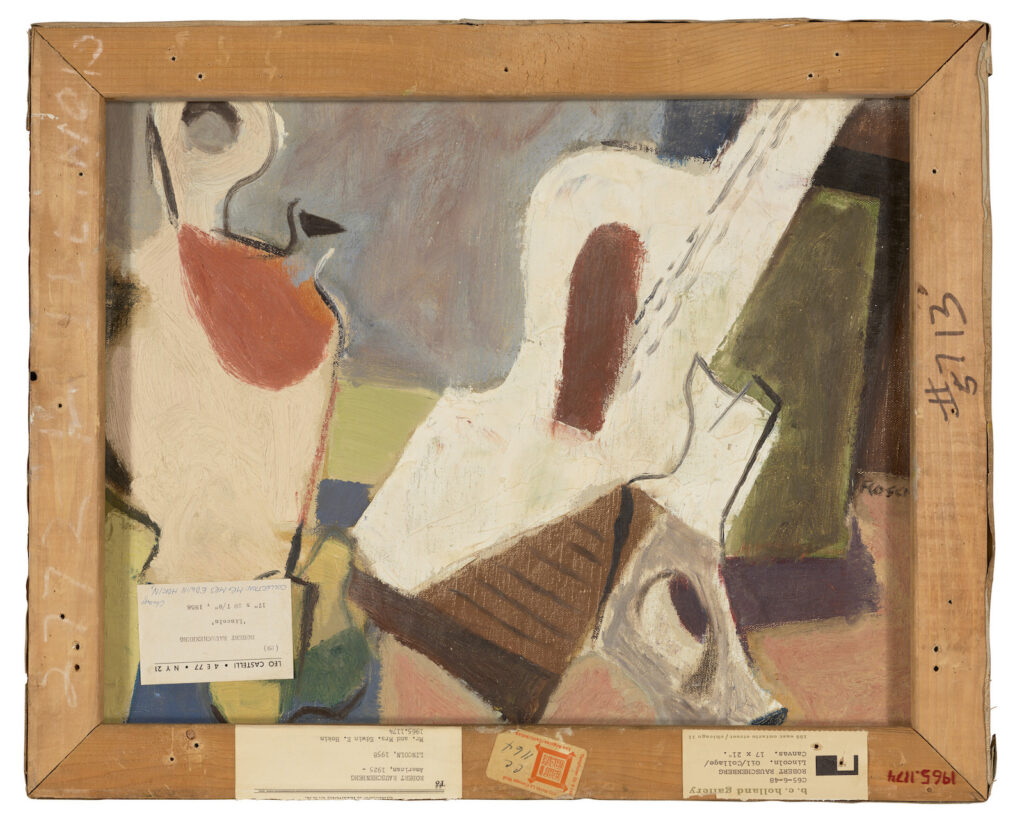
And about that canvas. As far as I can tell, the back of the painting has never been published. Which is wild, because it has another painting on it. This one is a rough, cubist-inspired still life, with a partial signature visible: Rosen. It seems like Rauschenberg scavenged an entire painting from someone else, and flipped and restretched it. This, even though he and Johns were making Matson Jones money by 1958, and by the Spring, both had breakthrough shows at Castelli. [Is that where Hokin saw and bought Lincoln? No checklist for the show survives, and supposedly nothing sold, except Bed, to Castelli. And yet at some point that year a guy from the Land of Lincoln bought the littlest combine he could.] The whole thing is a mystery.
And yet it’s not the biggest mystery. Hokin was a trustee of the Art Institute of Chicago, and they donated Lincoln to the museum in 1965. Even though it was small, it was exhibited and loaned regularly. But if they researched or published a single thing about it in fifty years, I can’t find it. Everything in this post I dug up today, on my own. The question I cannot find the answer to is why tf the Art Institute sold Lincoln, privately, to Boston slum lord Jerry Fineberg in 2015. Was it because in 2011 they bought Short Circuit, a much more substantial combine—which also includes a picture of Abraham Lincoln—and they were just like, eh, we’d rather have a million dollars than two early Rauschenbergs?
Anyway, Jerry died in December, may his memory be a blessing, and no mystery there, Christie’s is selling his collection next month, including Lincoln. And showing the back, with the painting behind a painting for the first time? Thanks, Christie’s!
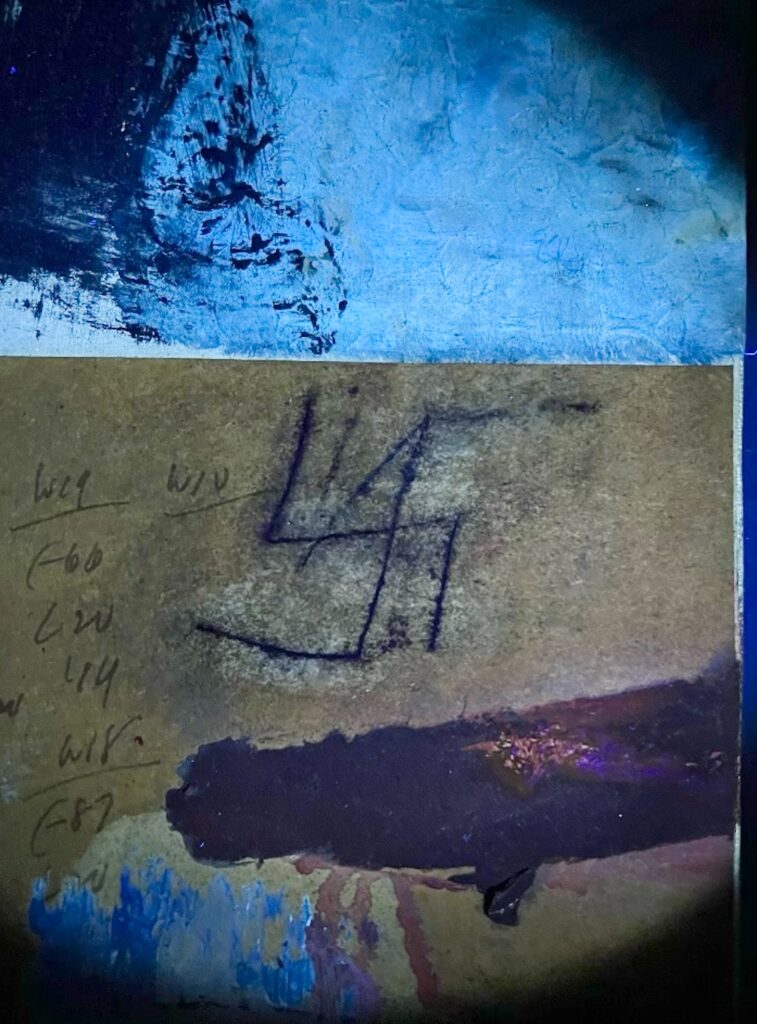
[POST-SALE UPDATE: Well, I guess by showing the back, the auction house could distract people’s attention from the front. In his auction recap column on artnet, Kenny Schachter notes that Lincoln was “infamous” for the misguided vandalism it suffered during its life at the Art Institute. Someone—who may have thought Rauschenberg was Jewish?—gauged a swastika into the painting. Actually, they gouged it into the paper collaged on the painting. Conservators managed to repair it, but as Kenny points out, the damage is clearly visible in UV light. And was only disclosed in the condition report. Which I am now trying to track down. (HMU) Also, did you get this little gem? Congratulations! How’s that going? HMU!

Wow, OK, meanwhile. To narrow down when the defacement occurred, I checked the plate in Paul Schimmel’s Combines catalogue, from 2005, when the work was still at the Art Institute. Not only is the erased or covered or filled swastika faintly visible on the top of the collaged element, but there are traces of an even bigger one that has been obscured on the lower right, below that dark, horizontal brushstroke. Are these swastikas like herpes, you’ve always gotta watch for flareups? Keep your conservator on retainer?
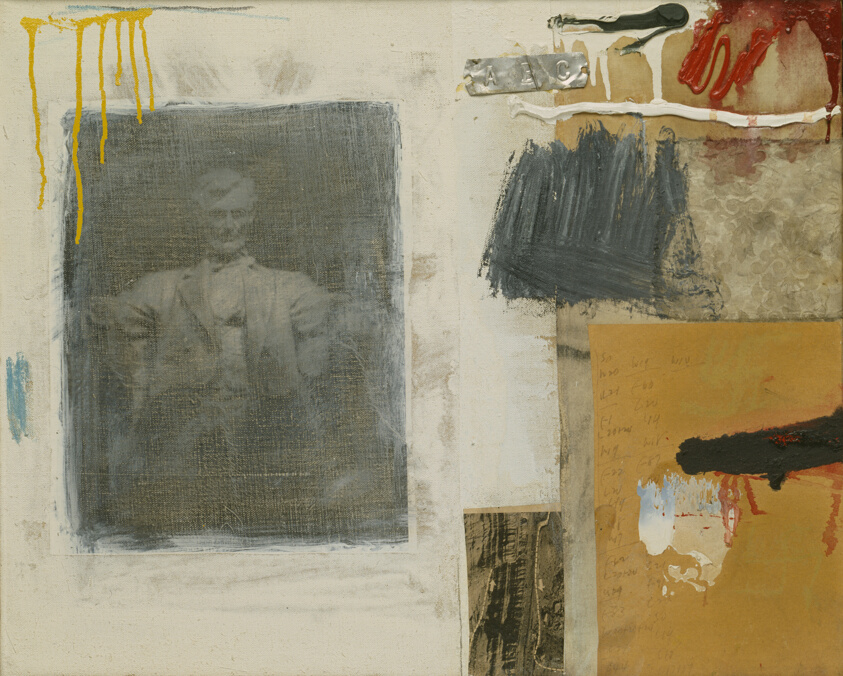
They’re visible in Walter Hopps’ 1998 Guggenheim catalogue, too, so that pushes it back a few more years. They’re visible on the Art Institute’s own site. What even happened here, and when, that someone had enough time and opportunity to scrawl or carve *two* swastikas into this picture of Abraham freaking Lincoln? So far, I can’t find any news reports of the defacement. Illinois and nazis, tho, amirite? Where’s a Blues Brother when you need him?
The work sold for $1.26million, btw, on $1m hammer. Ongoing conservation vigilance not included.]
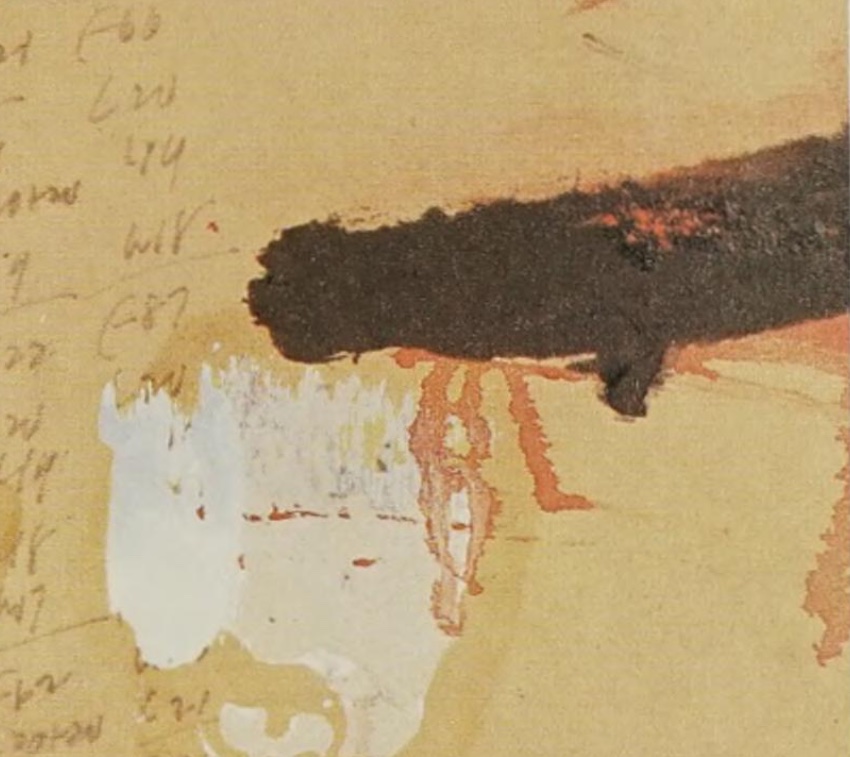
[Next day update to what will soon need to become its own post: Bryan Hilley found an image (above) from a 1980 Kunsthalle Dusseldorf catalogue that, to my eye, doesn’t show signs of defacement or repair. So maybe we can narrow it down to the 1980s or 90s.]
[Later next day update: OK, I’m thinking gauged is the wrong word, as is carved. It seems unlikely that the surface of this sheet of paper was pierced. It also seems clear from looking at the back, that the canvas wasn’t pierced or impacted. If it was, would conservators have carefully repaired and consolidated the random painting on the back? I doubt it. Conservators slide into my DMs to correct me, but what seems likely is that someone wrote on the paper, probably with a pen, and that residue is still visible under UV.]

OK, I have moved the investigation into the defacement of Lincoln and its aftermath into a new post.
17May2023, Lot 39C: Robert Rauschenberg, Lincoln, 1958, est. $2-3M [christies]
Other Than That, Lincoln, How Was The Show?
Previously, related, 2020: Affairs of State
2011: Hey-Ho, The Art Institute Bought Short Circuit
